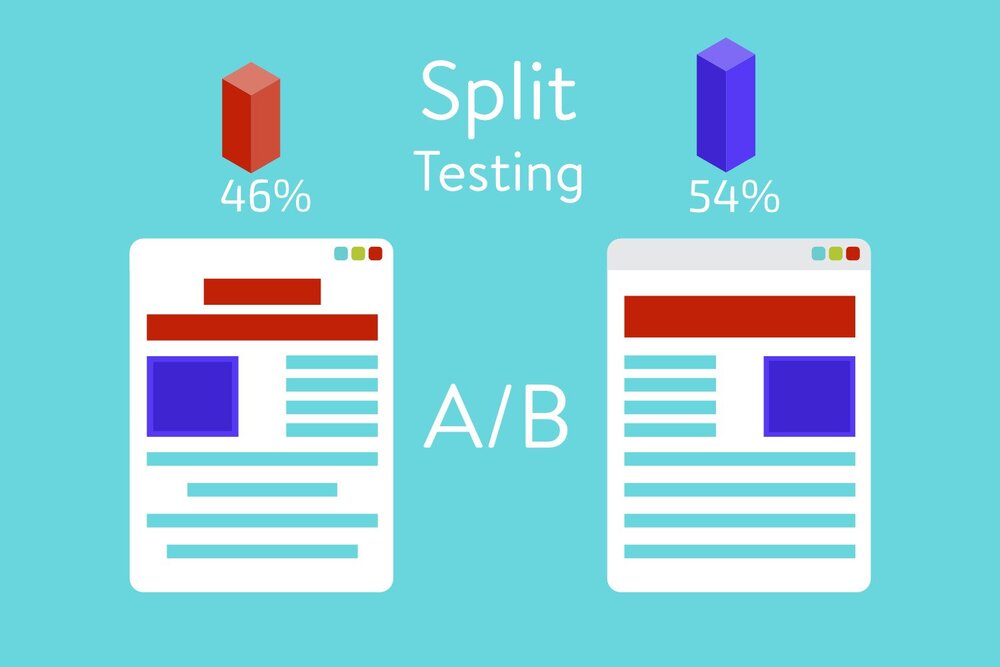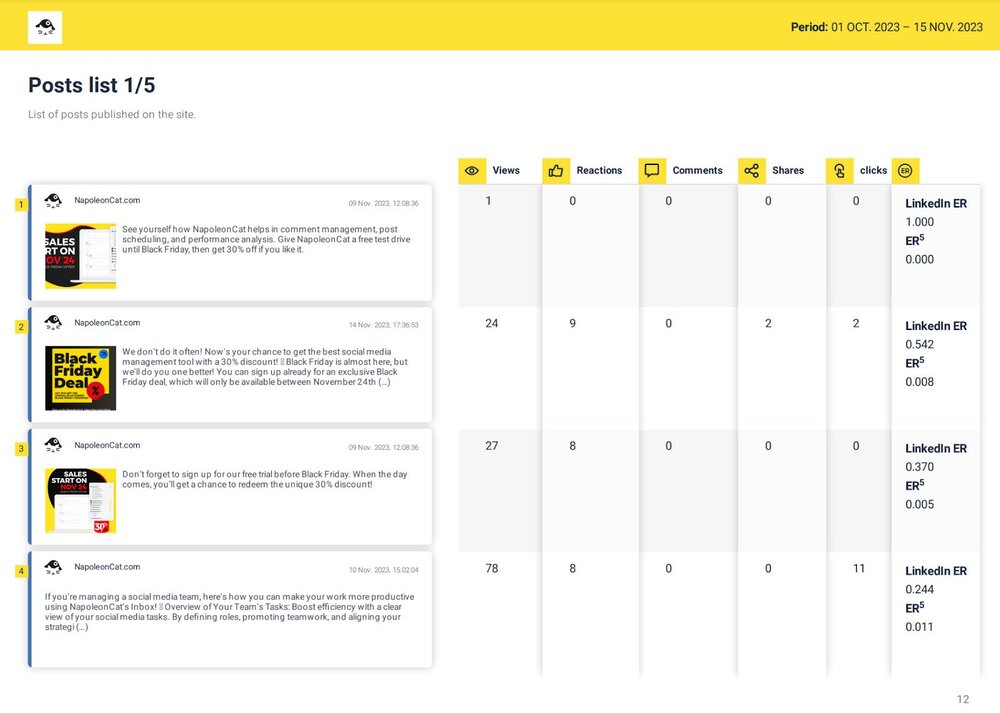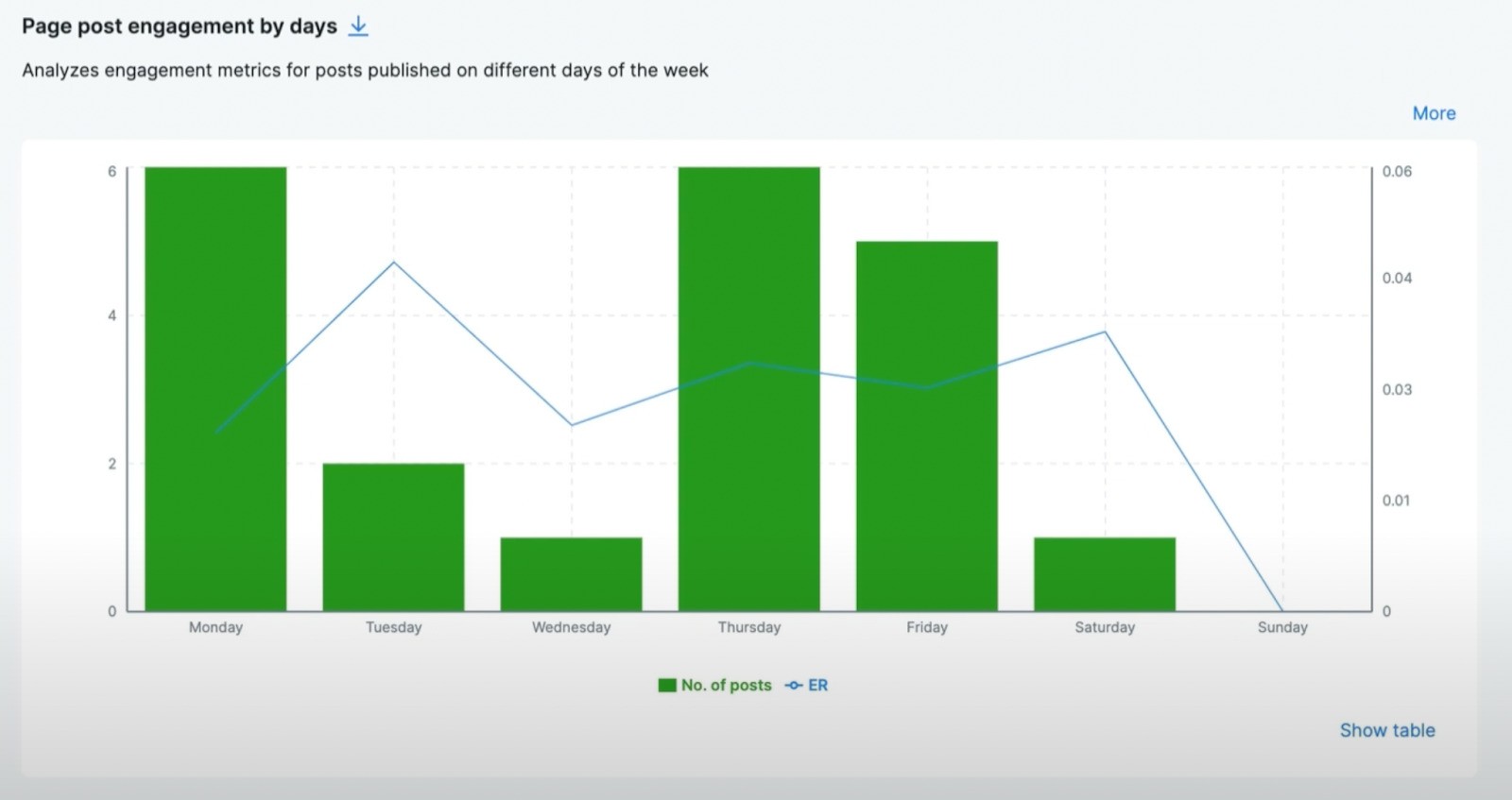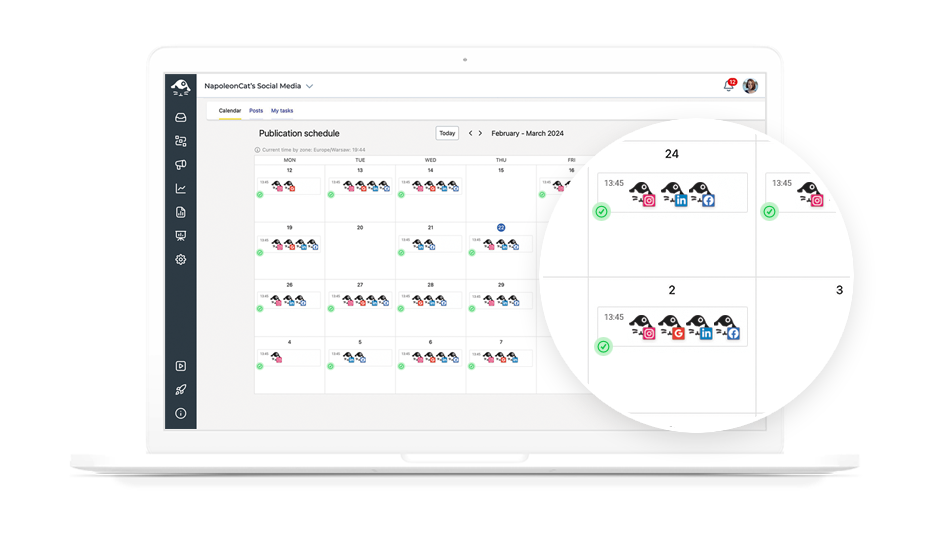Table of Contents
- How often should you post on LinkedIn?
- Why keep a regular posting frequency in your LinkedIn content strategy?
- How to find the right frequency for publishing posts on LinkedIn (spoiler alert: conduct a split test!)
- How to make the most of every LinkedIn post
- When is the best time to post on LinkedIn?
- Schedule your LinkedIn content for best results
- Over to you
- FAQs
Posting on LinkedIn is one of the best ways to build a B2B brand and grow your audience. According to the 13th B2B Content Marketing survey conducted by The Content Marketing Institute, LinkedIn is the top choice among B2B marketers when it comes to distributing organic content.
Of course, for your B2B brand to become top of mind among your audience, posting on a regular basis is essential.
But how regular is regular? Put another way: how often should you post on LinkedIn?
As is everything else in life and business, you need to strike the right balance. Post too much, and you end up overwhelming your audience. Post less frequently, and your brand becomes a barely noticeable blip in an overcrowded stream of content.
In this guide, we finally settle on how often you should post on LinkedIn.
Here’s what we’ll cover:
- How often should you post on LinkedIn?
- Why keep a regular posting frequency in your LinkedIn content strategy?
- How to find the right frequency for publishing posts on LinkedIn (spoiler alert: conduct a split test!)
- How to make the most of every LinkedIn post
- When is the best time to post on LinkedIn?
- Schedule your LinkedIn content for best results
- Over to you
- FAQs

Manage multiple LinkedIn accounts from one place
Manage all your LinkedIn comments and conversations from one view. Schedule LinkedIn posts and get in-depth analytics reports to improve your strategy – with an all-in-one social media tool.
How often should you post on LinkedIn?
Without some context, oftentimes the best answer is ‘it depends.’
The ideal posting frequency on LinkedIn depends on many factors, including the nature of your business, your industry, your target audience, and the types of posts you like to publish.
But one thing’s for sure: posting consistently is a step in the right direction.
However, if you want your target audience to engage with your LinkedIn content, a regular cadence in your posting schedule is crucial.
What is the ideal publishing frequency on LinkedIn?
While there’s no one-size-fits-all answer, aiming for a consistent posting schedule of 3 to 5 times per week is a good starting point for any B2B brand, at least according to a report by LinkedIn.
That’s equivalent to one post per day. Going by the study, if one of your followers sees your LinkedIn post today, then they’ll be eager enough to read another one of your posts the next day. And the next.
Again, three to five posts per week is only a starting point, but that doesn’t mean it’s the optimal publishing frequency for your brand. Later in this article, we’ll dive into the steps that will help you determine how often you should post on LinkedIn, considering your B2B brand’s positioning in the market, target audience, and other factors.
Why keep a regular posting frequency in your LinkedIn content strategy?
Why, indeed? I can think of three reasons.
Consistency builds trust and authority
How often you post shapes people’s perception of your brand. Humans are pattern-seeking animals. If you want to be top of mind among your audience, give them consistency.
If you publish four LinkedIn posts one week and then nothing the next, your audience might start getting funny ideas. They may think your business has shut down. Or they may think you simply don’t care (which is worse).
By posting on a consistent basis, your posts become a regular part of your audience’s LinkedIn experience. Establishing a routine not only keeps your audience engaged but also positions you as a dependable source of valuable insights or content within your niche.
When you establish a consistent and predictable posting schedule on platforms like LinkedIn, you’re essentially training your audience to expect content from you at specific times. This creates a sense of anticipation, which compels them to keep engaging with your LinkedIn posts.
Tailor LinkedIn posting frequency to your specific audience
B2B audiences are different. If you’re targeting C-level executives who frequent LinkedIn for industry updates, posting two to three a week with well-curated insightful content might be more effective than bombarding them with daily inspirational posts.
On the other hand, if your audience is millennial entrepreneurs who actively go to LinkedIn to learn the skills they need to succeed and network with other professionals, posting three to five times a week (or once daily) could be the sweet spot to keep them engaged.
Makes your content more favorable in the algorithm’s eyes
You’re probably thinking, why bother posting at a regular cadence? The more I post, the better, right?
Not really. In fact, there have been many claims that posting multiple times a day may confuse the LinkedIn algorithm. Research by Lead Talent also makes a great case as to why posting too many times a day makes you look bad in the algorithm’s eyes.
“When you share more than one post a day, this has a negative impact on the views of all the posts shared that day. Basically, because the algorithm wants to show the content of more members, instead of the content from a minority of “heavy users”. If someone shares a second post on the same day, the second post needs 3x more engagement to get the same views as the first, and if you share 3 posts in one day, the third will be ignored by the algorithm. Wait at least 3 hours before posting twice in a day, the algorithm will then treat both posts equally.”
How to find the right frequency for publishing posts on LinkedIn (spoiler alert: conduct a split test!)
When figuring out the best posting frequency for your brand on LinkedIn, making educated guesses can only take you so far.
The best way to find out is to test your assumptions in the real world. You can conduct a split test (or A/B test), in other words.
Split testing is a method where you compare different variables to see which performs better. In the context of LinkedIn posting frequency, you can test different posting schedules and analyze the results to determine the most effective post frequency for your specific audience.
To do a split test on LinkedIn posting frequency, follow these steps:
1. Define your goal
Before you can do an A/B test, you need to define your goal. You won’t know what to measure otherwise.
Besides, you can’t call it a social media strategy if you don’t define specific goals for your LinkedIn or social media campaign.
To come up with goals that are worth chasing, set SMART goals. That is, make sure your goals are Specific, Measurable, Achievable, Relevant, and Time-bound (like I said, SMART).
If your goal is, say, to increase overall engagement on your LinkedIn posts by 20% within the next three months, then you’ll know how to track your results.
2. Create your test groups
Divide your audience or content schedule into groups. One group will follow one posting frequency (e.g., once a day), and the other group will follow a different frequency (e.g., three times a week).

3. Analyze your results
After a sufficient test period, analyze the engagement metrics for each group. Look at likes, comments, shares, and overall reach. Identify which posting frequency led to better results in achieving your defined goal.
To track and measure your results, you can use the native LinkedIn Analytics tool. If you want to track your engagement on other platforms like Facebook or Instagram, as well as generate automated LinkedIn reports, a third-party tool like NapoleonCat should come in handy.


Manage multiple LinkedIn accounts from one place
Manage all your LinkedIn comments and conversations from one view. Schedule LinkedIn posts and get in-depth analytics reports to improve your strategy – with an all-in-one social media tool.
4. Adjust your strategy
Based on the results, adjust your LinkedIn posting frequency strategy. If posting once a day resulted in significantly higher engagement, consider adopting that frequency moving forward.
Remember, the key is not just to find a frequency that works for LinkedIn in general, but one that specifically resonates with your target audience. Regularly reassess and adapt your strategy based on changing audience behaviors and platform algorithms.
How to make the most of every LinkedIn post
Hitting the sweet spot in terms of posting frequency doesn’t mean you can rest easy.
What’s the point if your LinkedIn posts are boring your audience to tears and don’t provide insights they can use?
Here are some tips to ensure every LinkedIn post you publish will be impactful to your audience.
1. Post about topics that are relevant to your audience
You want your specific audience to care about what you have to say? Then post something that’s relevant to their needs, desires, and interests.
It’s not about you. It’s about them.
Sure, it’s tempting to treat your audience with your genius thoughts and feelings about, say, the current state of politics. You might even approach it from an angle that seems relevant to your niche.
But will they care? If you’re in doubt, then they most likely won’t.
Keep posting about things your people will care about, and chances are you’ll have their undivided attention each time they see your brand on their LinkedIn feeds.
2. Encourage dialogue with your audience
Don’t let your LinkedIn posts be a monologue. Remember, when you’re building a brand on social media, you’re in the business of creating a community.
Encourage dialogue with your audience by:
- Asking thought-provoking questions: Sparking conversations with questions relevant to your industry or current trends can invite your audience to share their opinions and experiences. For example, ask your audience about their biggest challenges, their favorite productivity hacks, or their thoughts on current trends.
- Responding to comments: Simply responding to comments on your posts can go a long way to sparking and maintaining their interest in what you have to offer. In fact, 44% of customers feel that brand conversations are more persuasive than ads.
3. Share your insights and experiences
Award-winning author and entrepreneur Anand Tamboli writes (in a convincing fashion) that people read Linkedin content to fill the “gap between where they are and where they want to go.”
In other words, part of the reason why people are on LinkedIn is to build expertise. If you want your followers to keep reading your posts, share what you know to help them overcome their fears and obstacles. Why do you think they followed you on the platform in the first place?
As an entrepreneur, marketer, or influencer, your experience and thoughts are entirely your own. You achieved some form of success because of your unique experiences. Your genuine perspective can be the valuable resource your audience is seeking on their professional journey.
When is the best time to post on LinkedIn?
Knowing how often to post on LinkedIn will help your engagement, but the timing of your LinkedIn posts also plays a vital role in your success.
After all, LinkedIn, like other social media platforms, has peak activity periods when your audience is more likely to be online.
Research suggests that the best times to post on LinkedIn are typically during weekdays, especially midweek, and during business hours.
Let’s get more specific. Here are the best times to post on LinkedIn for each day:
- Monday: Though not popular, posting in the morning before the day gets busy might work.
- Tuesday: Mornings (8-10 AM) are recommended.
- Wednesday: Prime times include 12 PM, 8-10 AM, and other periods like 6-9 PM and 3-6 PM.
- Thursday: 9 AM is suggested.
- Friday: 9 AM is identified as a good time.
- Saturday: Despite being less popular, 1 PM and 10 AM are mentioned.
- Sunday: Considered the worst day, but 10 AM and 8 AM are suggested if posting.
But as is the case in finding how often to post on LinkedIn, it depends. The best posting time for your brand can vary based on your specific audience’s behavior, industry, and location.
Experimenting with posting times and analyzing the engagement metrics can help you identify the times when your audience is most active. You can also do some split testing so you can see the differences in engagement between posting times.
Again, use LinkedIn’s analytics tools to gather data about when your followers are online. You can even get more granular by using LinkedIn management tools for business. NapoleonCat, for example, allows you to track and measure engagement by days and hours.


Schedule your LinkedIn content for best results
Once you find out how often to post content on LinkedIn (and the best times), the next (and most challenging) part begins: creating a consistent posting schedule and sticking with it.
Coming up with ideas on what to post on LinkedIn and then writing those ideas down in ways that will be compelling to your audience can give you sleepless nights. If you fail to keep up, then everything we’ve talked about in this article will be for nothing.
My best advice? Schedule your LinkedIn content a few weeks in advance and plot each piece in a content calendar, where you can easily collaborate with your team.
NapoleonCat’s Publisher is one tool that lets you plan, create, publish, and schedule your posts to LinkedIn (personal & company pages), Facebook, Instagram, TikTok, X, and Google My Business in one convenient dashboard.
NapoleonCat also comes with a social media calendar that gives you a bird’s eye view of your content strategy. You can pick the posting times, the dates, and the platform where you want to publish the content, and then add the content.

We highly recommend you test NapoleonCat completely for free here – no credit card required during signup 😉

Manage multiple LinkedIn accounts from one place
Manage all your LinkedIn comments and conversations from one view. Schedule LinkedIn posts and get in-depth analytics reports to improve your strategy – with an all-in-one social media tool.
Over to you
How often you should post on LinkedIn will depend on your brand identity, target audience, and industry dynamics. It can take some time to find your “sweet spot,” but you can make do with what’s generally recommended, at least for the meantime, to get some quick wins.
However, general recommendations can only take you so far. Take the time to experiment so you can find out the posting frequency that works best for your brand. I promise you that the outcome will be worth it.
How often to post on LinkedIn – FAQs
Find out how often you should post on LinkedIn to stay visible and engage your audience effectively.
How often should you post on LinkedIn to increase your visibility?
Posting 3 to 5 times per week is a solid starting point for B2B brands, according to LinkedIn.
Consistency is more important than volume—posting a few times each week keeps your profile active and relevant without overwhelming your audience. Avoid posting too frequently, as LinkedIn’s algorithm may suppress content from users who post multiple times a day.
What is the 4-1-1 rule on LinkedIn?
The 4-1-1 rule suggests that for every 6 posts you publish: 4 should be educational or entertaining content from others, 1 should be your own soft-sell content, and 1 should be a hard-sell piece.
This approach helps balance promotional messaging with value-driven content, keeping your audience engaged and avoiding the appearance of self-promotion overload.
What is the 5-3-2 rule on LinkedIn?
The 5-3-2 rule recommends that in every 10 LinkedIn posts: 5 should be curated content, 3 should be your original content, and 2 should be personal updates or fun content.
It’s a flexible framework that helps diversify your content strategy while building a more human, relatable brand presence.
How often is it best to post on LinkedIn?
The best posting frequency for LinkedIn is between 3 to 5 times per week.
This range is often seen as the sweet spot for maintaining audience interest and algorithmic reach without overloading your feed. It allows time for each post to gain traction and visibility before the next one appears.
Can you post too much on LinkedIn?
Yes, you can definitely post too much on LinkedIn. Over-posting can overwhelm your connections, leading them to skip or ignore your updates – resulting in lower engagement on your account.
The most important reason you shouldn’t post too much content on LinkedIn is that your key updates may be overshadowed by less significant ones.
How many posts should I post on LinkedIn per day?
You should post at least one post per day on LinkedIn. One high-quality post a day allows your audience to focus on your message which can generate the interactions needed for greater visibility.
You may also like:
- A Quick Guide to Social Media Publishing
- The Best Times to Post on Social Media
- Here’s The Best Time to Post on TikTok
- Best Time to Post Reels on Instagram
- Best Times to Post on Instagram
- Best Time to Post on TikTok
- What’s The Best Time to Post on LinkedIn?
- Here’s the Best Time to Post Instagram Stories


